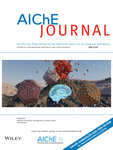Atomic size mismatch induced consecutive compressive strain on intermetallic compound towards boosted hydrogen evolution
IF 3.5
3区 工程技术
Q2 ENGINEERING, CHEMICAL
引用次数: 0
Abstract
Modulating lattice strain in intermetallic compounds could effectively alter their electronic structure and binding energy, thus impacting catalytic activity. Strain is usually induced through lattice mismatch, achieved by constructing core‐shell nanostructures or metal‐substrate interfaces with complex reciprocity and distractors. However,原子尺寸失配诱导金属间化合物产生连续压缩应变,促进氢气演化
调节金属间化合物的晶格应变可有效改变其电子结构和结合能,从而影响催化活性。应变通常通过晶格错配来诱导,通过构建具有复杂互易性和分心的核壳纳米结构或金属-基底界面来实现。然而,在没有界面构建或晶格错配的情况下进行原位诱导应变则面临挑战。在本研究中,我们通过诱导内部原子半径失配,在 CoPt3Pd 金属间化合物中精确控制 -0.5% 至 -0.8% 的连续压缩应变。精确的应变控制导致了 d 波段中心的负移和动态电荷分布,并促进了水的解离,从而提高了电催化活性。具有-0.5%压缩应变的 CoPt3Pd 催化剂表现出卓越的氢气进化活性,在 1 A cm-2 的过电位为 169 mV。我们的方法提供了一种通过原子尺寸失配来操纵金属间化合物压应变的直接方法,对催化过程具有广泛的影响。
本文章由计算机程序翻译,如有差异,请以英文原文为准。
求助全文
约1分钟内获得全文
求助全文
来源期刊

AIChE Journal
工程技术-工程:化工
CiteScore
7.10
自引率
10.80%
发文量
411
审稿时长
3.6 months
期刊介绍:
The AIChE Journal is the premier research monthly in chemical engineering and related fields. This peer-reviewed and broad-based journal reports on the most important and latest technological advances in core areas of chemical engineering as well as in other relevant engineering disciplines. To keep abreast with the progressive outlook of the profession, the Journal has been expanding the scope of its editorial contents to include such fast developing areas as biotechnology, electrochemical engineering, and environmental engineering.
The AIChE Journal is indeed the global communications vehicle for the world-renowned researchers to exchange top-notch research findings with one another. Subscribing to the AIChE Journal is like having immediate access to nine topical journals in the field.
Articles are categorized according to the following topical areas:
Biomolecular Engineering, Bioengineering, Biochemicals, Biofuels, and Food
Inorganic Materials: Synthesis and Processing
Particle Technology and Fluidization
Process Systems Engineering
Reaction Engineering, Kinetics and Catalysis
Separations: Materials, Devices and Processes
Soft Materials: Synthesis, Processing and Products
Thermodynamics and Molecular-Scale Phenomena
Transport Phenomena and Fluid Mechanics.
 求助内容:
求助内容: 应助结果提醒方式:
应助结果提醒方式:


